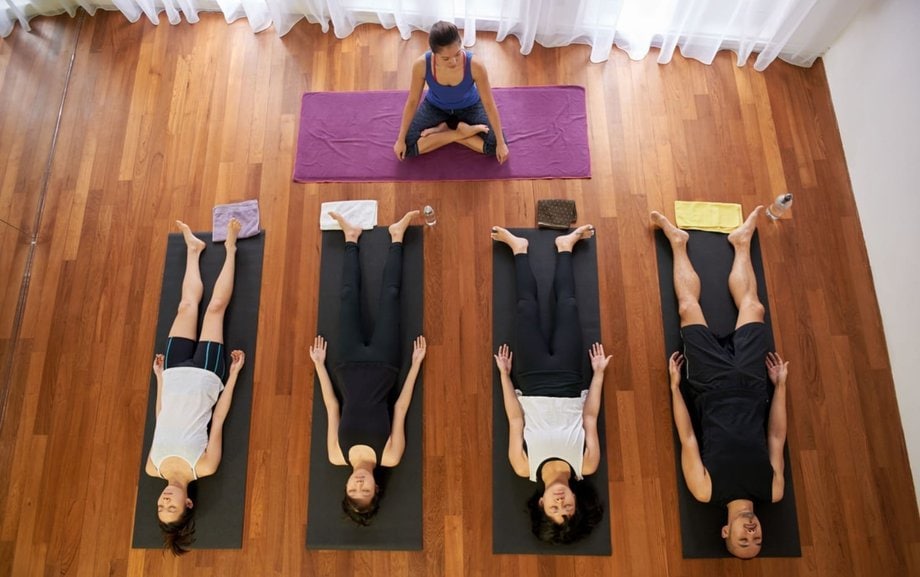Incorporating Yoga Nidra Meditation Into Your Self-Care Routine

Are you looking to enhance your self-care routine? Incorporating yoga nidra meditation can be the perfect addition. This practice offers numerous benefits for your overall well-being.
Want to know how to get started? We’ll show you how to seamlessly incorporate yoga nidra into your daily routine. With a few simple techniques and a dedicated space, you’ll be able to deepen your self-care journey and find inner peace.
Don’t let your busy schedule hold you back – make time for yoga nidra and prioritize your well-being.
Key Takeaways
- Yoga nidra meditation offers numerous benefits for overall well-being, including reducing stress and anxiety, improving sleep quality, and promoting mental health and inner peace.
- To incorporate yoga nidra into your routine, find a quiet and comfortable space, set an intention for your practice, and follow a guided meditation.
- Creating the perfect space for yoga nidra meditation involves choosing a quiet and peaceful environment, adding relaxation accessories like cushions and blankets, incorporating soothing lighting and natural elements, and soundproofing the space if necessary.
- Essential relaxation accessories for yoga nidra meditation include an essential oil diffuser with calming scents like lavender, eucalyptus, and frankincense, which can enhance relaxation techniques and mindfulness exercises.
Benefits of Yoga Nidra Meditation for Self-Care
You’ll love the benefits of yoga nidra meditation for your self-care routine. This practice can have a profound impact on your mental health and provide much-needed stress relief.
Yoga nidra, also known as ‘yogic sleep,’ is a deep relaxation technique that helps calm your mind and body. By entering a state of conscious sleep, you can release tension and anxiety, allowing your mind to find peace.
This form of meditation has been shown to reduce stress levels, improve sleep quality, and enhance overall well-being. It can also help you gain a sense of clarity and focus, enabling you to better navigate the challenges of daily life.
Incorporating yoga nidra into your self-care routine can be a powerful tool for improving your mental health and finding inner peace.
Getting Started: How to Incorporate Yoga Nidra Into Your Routine
To begin, it’s important to establish a consistent practice of yoga nidra. Here are some getting started tips to help you incorporate this powerful meditation technique into your routine.
First, find a quiet and comfortable space where you can lie down and relax.
Next, set an intention for your practice, whether it’s to reduce stress, improve sleep, or enhance self-awareness.
Then, follow a guided yoga nidra meditation audio or video to help you focus and deepen your relaxation.
The benefits of regular practice are numerous. Not only does yoga nidra help calm the mind and release tension in the body, but it also promotes better sleep, boosts creativity, and improves overall well-being.
Creating the Perfect Space for Yoga Nidra Meditation
When it comes to creating the ideal meditation room for your yoga nidra practice, there are a few key points to consider.
First, you’ll want to choose a space that is quiet, peaceful, and free from distractions.
Next, think about adding essential relaxation accessories such as a comfortable meditation cushion, soft blankets, and soothing lighting to create a serene atmosphere.
Ideal Meditation Room
Creating an ideal meditation room can enhance your yoga nidra practice. By designing a space that promotes relaxation and tranquility, you can create a peaceful environment that supports deep meditation and inner calm. Here’s a simple table to help you create your ideal meditation room:
| Essentials | Aesthetics |
|---|---|
| Comfortable cushion or chair | Soft lighting |
| Blankets and pillows for support | Natural elements (plants, crystals) |
| Calming scents (incense, essential oils) | Minimalistic decor |
| Soundproofing or white noise machine | Serene colors (pastels, neutrals) |
Essential Relaxation Accessories
For a truly relaxing experience, consider adding essential oils to your meditation room. The soothing scents can enhance your relaxation techniques and mindfulness exercises.
Here are four essential relaxation accessories to consider:
- Essential Oil Diffuser: This device disperses the oil into the air, creating a calming atmosphere in your meditation space.
- Lavender Oil: Known for its calming properties, lavender oil can help reduce stress and promote relaxation during your mindfulness exercises.
- Eucalyptus Oil: This invigorating scent can help clear your mind and improve focus during meditation.
- Frankincense Oil: With its grounding and centering properties, frankincense oil can deepen your relaxation experience and promote a sense of inner peace.
Exploring Different Yoga Nidra Techniques for Self-Care
You can try out various yoga nidra techniques to enhance your self-care routine.
Yoga nidra, also known as ‘yogic sleep,’ is a form of meditation that promotes deep relaxation and rejuvenation.
One technique you can explore is the body scan, where you systematically focus on different parts of your body, releasing tension and promoting relaxation.
Another technique is the breath awareness, where you simply observe your breath, allowing it to calm your mind and body.
These different techniques offer numerous benefits for your well-being.
Yoga nidra can reduce stress, anxiety, and insomnia, improve focus and concentration, and enhance overall mental and physical health.
Making Time for Yoga Nidra in Your Busy Schedule
Do you find it challenging to make time for yoga nidra in your busy schedule?
Overcoming time constraints is crucial in order to incorporate this self-care practice into your routine.
Overcoming Time Constraints
If you’re feeling short on time, try incorporating a quick yoga nidra meditation into your self-care routine. It may seem counterintuitive to add another activity to your already busy schedule, but taking a few minutes for yourself can actually help you manage stress and find balance.
Here are four ways yoga nidra can help you overcome time constraints and prioritize your well-being:
- Efficiency: Yoga nidra allows you to relax deeply in a short amount of time, giving you maximum benefits in minimal time.
- Focus: By practicing yoga nidra, you enhance your ability to concentrate and stay present, making the most of the time you do have.
- Energy boost: A quick yoga nidra session can recharge your mind and body, providing you with renewed energy to tackle your tasks.
- Sleep aid: Incorporating yoga nidra into your routine can improve the quality of your sleep, helping you wake up feeling refreshed and ready for the day.
Finding Quiet Moments
Now that you’ve learned how to overcome time constraints, it’s time to focus on finding quiet moments for yourself.
Incorporating quiet reflection and mindfulness exercises into your daily routine can greatly benefit your overall well-being. Take a few moments each day to sit in silence, away from distractions, and simply be present in the moment.
You can practice mindfulness exercises such as deep breathing or body scanning to help bring your attention to the present moment. These moments of quiet reflection allow you to reconnect with yourself, reduce stress, and improve your mental clarity.
Whether it’s in the morning, during a lunch break, or before bed, finding these moments of stillness can have a profound impact on your self-care journey.
Prioritizing Self-Care Practice
Finding quiet moments for yourself is essential in prioritizing your self-care practice. It’s important to take time out of your busy schedule to focus on your well-being.
Here are four ways to prioritize self-care activities and incorporate mindfulness techniques into your daily routine:
- Set aside dedicated time: Schedule specific blocks of time in your day for self-care activities. Whether it’s 10 minutes or an hour, make it a priority.
- Make self-care a non-negotiable: Treat self-care activities as non-negotiable appointments with yourself. Just like any other commitment, stick to them and don’t let anything else take their place.
- Practice mindfulness techniques: Incorporate mindfulness techniques such as deep breathing, meditation, or yoga into your self-care routine. These techniques can help you relax, reduce stress, and improve your overall well-being.
- Find activities that bring you joy: Engage in activities that bring you joy and make you feel rejuvenated. It could be reading a book, taking a walk in nature, or indulging in a hobby. Prioritizing activities that bring you happiness is an important part of self-care.
Enhancing Your Self-Care Practice With Yoga Nidra
Enhancing your self-care practice with yoga nidra can greatly improve your overall well-being. Yoga nidra, also known as yogic sleep, is a form of guided meditation that promotes deep relaxation and stress relief. By incorporating yoga nidra into your bedtime routine, you can experience numerous benefits for your mental and physical health.
Here are three key benefits of yoga nidra for stress relief:
| Benefits | Description |
|---|---|
| Reduces anxiety | Yoga nidra helps calm the nervous system and release tension |
| Improves sleep | It promotes deep relaxation, making it easier to fall asleep |
| Enhances mindfulness | Yoga nidra cultivates a sense of present-moment awareness |
Incorporating yoga nidra into your bedtime routine is simple. Find a quiet space, lie down comfortably, and listen to a guided yoga nidra meditation. Allow the soothing voice to guide you into a state of deep relaxation. Make it a regular practice to experience the cumulative benefits of yoga nidra for stress relief. Start tonight and watch your overall well-being improve.
Deepening Your Self-Care Journey Through Yoga Nidra Meditation
To deepen your self-care journey, try incorporating yoga nidra meditation into your nightly wind-down routine. Yoga nidra is a form of guided meditation that promotes deep relaxation and improves sleep quality. Here are four ways yoga nidra can enhance your self-care practice:
- Deepens relaxation: Yoga nidra takes you into a state of deep relaxation, helping to release tension and stress from your body and mind.
- Enhances sleep quality: Regular practice of yoga nidra can improve the quality of your sleep, allowing you to wake up feeling refreshed and rejuvenated.
- Reduces anxiety and depression: By calming the nervous system, yoga nidra can help alleviate symptoms of anxiety and depression, promoting overall well-being.
- Cultivates self-awareness: Through the practice of yoga nidra, you develop a heightened sense of self-awareness, allowing you to better understand and meet your own needs.
Incorporating yoga nidra meditation into your self-care routine can be a powerful tool for deepening relaxation and improving sleep quality. Give it a try and experience the transformative benefits for yourself.
Frequently Asked Questions
Can Yoga Nidra Meditation Help With Physical Ailments or Chronic Pain?
Yes, Yoga Nidra meditation can help with physical ailments and chronic pain. By incorporating this practice into your routine, you can experience its effectiveness in providing relief and promoting overall well-being.
Is It Necessary to Have Prior Experience With Yoga or Meditation to Practice Yoga Nidra?
You don’t need prior experience with yoga or meditation to practice yoga nidra. It’s a great practice for beginners, offering deep relaxation, stress reduction, and improved sleep. Give it a try!
How Long Does a Typical Yoga Nidra Meditation Session Last?
A typical yoga nidra meditation session lasts around 20 to 45 minutes. During this time, you can experience the numerous benefits of yoga nidra such as deep relaxation, stress reduction, and improved sleep. Incorporating yoga nidra into your daily routine can be a powerful self-care practice.
Can Yoga Nidra Be Practiced in a Group Setting, or Is It Primarily an Individual Practice?
In a group setting, yoga nidra can be practiced to enhance the experience through shared energy and support. The benefits of practicing in a group include a sense of community, deep relaxation, and amplified healing.
Are There Any Potential Risks or Side Effects Associated With Practicing Yoga Nidra Meditation?
There may be potential risks or side effects associated with practicing yoga nidra meditation. It is important to be aware of these and consult with a qualified instructor or healthcare professional before starting.








